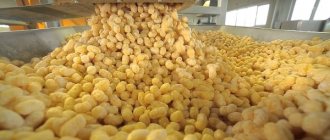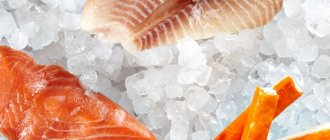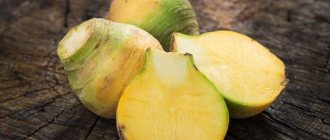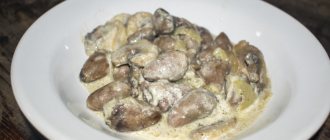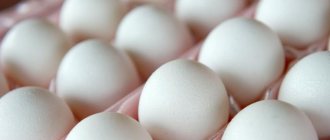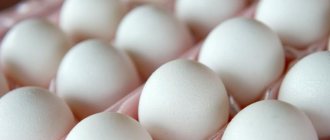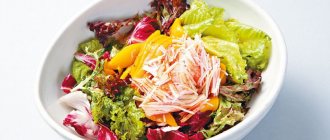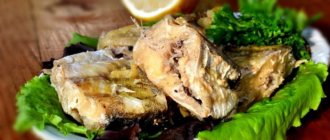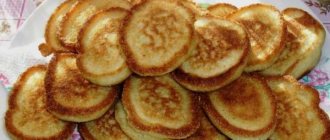Nutritional information | Vitamins | Minerals
How much does Corn sticks cost (average price per 1 kg)?
What do you think almost all children of the Soviet Union loved most? Of course, corn sticks, and always covered in powdered sugar. Although, on the other hand, there was nothing cheaper and more accessible in those days. It is gratifying that even today this airy delicacy has not lost its popularity.
A food product called corn sticks, which is a foam based on corn grits prepared in a special way, which is fully formed and subsequently dried. The calorie content of corn sticks is 518 kcal per 100 grams of puffed product.
The main advantage of this sweet, in addition to its excellent taste, is the fact that it is easy, quick and simple to prepare a huge number of a wide variety of dishes from sticks. To do this, you need to purchase corn sticks and some other quite affordable and inexpensive products. Anthill cake, Raffaello cake, corn sticks in melted toffee, sweet sausage, golden balls with coconut flakes, waffles, hedgehogs... And these are just a few examples of desserts and sweet dishes based on corn sticks.
Health benefits of corn sticks
Corn sticks, their benefits and harms, have long been studied by nutrition experts. They came to the conclusion that the product is still valuable for the human body, even though the presence of vitamins and minerals in it is too low.
Experts highlight the following beneficial properties of corn sticks:
- Saturation of the body with the daily norm of vitamin B2.
- Improved mood and increased vigor.
- Eliminate signs of hunger.
Corn sticks are an ideal quick snack if you don’t have time to have a full lunch.
Is it possible to eat corn sticks on a diet?
Corn sticks can still be beneficial for your health. But if you’re on a diet, you definitely shouldn’t include them in your diet. This is because they are high in calories, which means that it is unlikely that you will be able to lose weight with such a diet.
Still, it is recommended to overcome your desire to eat a portion of corn sticks while on a diet. It is best to replace them with a lower calorie product.
Is it possible to eat corn sticks at the station?
During Lent, people are not allowed to eat foods containing animal fats. There are no prohibited ingredients in corn sticks. Sweet delicacies should be consumed in limited quantities during Lent. When purchasing, pay attention to the composition of the product. Many glazed products may contain dairy additives, and the use of lean milk is prohibited.
The main meaning of the great holiday is to cleanse the soul of sins, and overeating does not help in spiritual and physical cleansing. Therefore, vegetable fasts, vegetables and fruits should be a priority during this period . It will not only follow the church fast, but will also be beneficial for the whole body.
Harm of corn sticks
Corn sticks, the benefits of which depend on the manufacturer, can cause significant harm to the body. If you purchase airy sweets from unknown manufacturers, there is a high probability of dangerous fillers entering your body. High quality corn products are considered harmless. The only serious danger to a healthy person is possible weight gain.
Those with diabetes should limit their consumption of treats. Popsicles are known for their high glycemic index. They are not recommended for high blood sugar levels.
In case of gastrointestinal disorders, consumption of corn delicacy can cause active gas formation, accumulation of gases in the stomach and intestines. If you have an individual intolerance to corn raw materials, it is also undesirable to use air sticks. Sometimes natural and chemical fillers cause negative reactions in the body, so it is important to carefully check the composition of the product.
If the sticks are consumed regularly, over time it can lead to tooth decay. The reason for the development of the disease is not only in sweet additives. The corn mass layers and is difficult to remove from the gums and teeth. Even using a toothbrush, floss and other cleaning devices does not always help get rid of treat residue.
For ulcers and gastritis, consumption of corn sweets is undesirable. This is a prohibited product during therapeutic diets. But in the remission phase, a small amount of sticks will not harm. In this case, it is advisable to familiarize yourself with the doctor’s recommendations.
If you are concerned about skin imperfections, especially those caused by digestive disorders, it is not advisable to consume corn products. The sticks contain a lot of corn starch, sugar, and fat, which can cause rashes, dullness and other skin imperfections.
Those who suffer from chronic dermatological diseases should be especially careful. Sometimes the body’s negative reaction does not appear immediately, but only over time. What negative consequences include: spasms, pain, nausea.
How are they harmful and to whom are they contraindicated?
The most useful product, if consumed in excess, causes harm. This statement is also true for sticks. The delicacy can be a nutritious breakfast due to its high calorie content, but for this very reason they are not recommended for overweight people. If a person is prescribed a diet for weight loss or a diet for gastritis and pancreatitis, then it is better to abstain from the product.
The sweetness has a high glycemic index. Like other foods high in glucose, the treat is contraindicated for people with diabetes mellitus and pancreatitis. Healthy people should not abuse it either. The maximum amount of product that can be eaten per day without harm to the body is 2 packs, and for children - 1 pack.
It is not recommended to eat the product for those who suffer from ailments of the digestive system. The treat causes increased gas formation and bloating. For gastritis, ulcers, pancreatitis, it is better to abstain from it. Can be consumed in small quantities during periods of remission.
Unscrupulous manufacturers may add artificial colors and preservatives to the product. In children, these components cause an allergic reaction, so you should not feed chopsticks to children under 3 years of age.
An absolute contraindication is individual intolerance to the components. If you are allergic to corn or other ingredients, eating chopsticks is strictly prohibited.
What are the benefits of corn sticks?
The benefits of corn sticks are small, but they still exist. The nutritional value of the product is as follows:
- 100 grams of corn sticks contain half the daily requirement of vitamin B2, which is necessary for normalizing the functioning of the nervous system, thyroid gland, vision, good skin and hair condition.
- The high calorie content of the product allows you to quickly suppress the feeling of hunger in an emergency.
- A large amount of carbohydrates not only gives you a feeling of fullness, but also improves your mood. If you eat a small amount of sticks for breakfast, you can energize yourself for the whole day.
There are no recommendations for daily dosage of the product. The permissible dosage of treats depends on the person’s health status, age and individual characteristics of the body.
Are there any benefits to using them?
Despite the unique, healthy composition of corn flour, the benefits of corn sticks are extremely low. The product manufacturing technology involves several stages of heat treatment. Therefore, those components that remain in the sticks are preserved in negligibly small quantities. Only vitamin B2 can be noted.
The main benefit of the treat is the large amount of fast carbohydrates. These components are very quickly broken down by the body and enter the blood, which instantly increases sugar levels. So, you can increase your ability to work, improve your mood, and get rid of a diabetic coma. But, in turn, excessive consumption of fast carbohydrates causes a number of diseases, one of which is obesity.
Today, some manufacturers produce premium quality corn sticks. This product contains useful microelements and vitamins. Therefore, only such a delicacy can bring some benefit to the body. Experts advise eating a small amount of sticks after the main meal. In this case, the product must be washed down with vegetable or fruit juice.
How are corn sticks made?
The product is based on corn flour. During manufacturing, corn sticks undergo additional processing at high temperatures, so they are deprived of most of their valuable nutritional properties. When produced on an industrial scale, corn sticks are made with the addition of powdered sugar, various preservatives and food coloring. In order to make the product a little healthier, various vitamin complexes are added to it.
Manufacturing technology goes through several important stages, each of which plays a significant role. The main component of the product is whole corn grains, which are dried and ground into flour during processing. The resulting flour is carefully sifted so that large parts of the raw material do not get into the finished product. The next step is to mix corn flour with sweeteners, flavorings and flavorings. At this stage of production, excess moisture appears in the flour, which must be removed. After processing on special equipment, not only does excess moisture evaporate, but also a plastic mass is obtained from mixed components.
Makeup with arrows: types, rules, step-by-step description of application features (120 photos and videos)
The formed corn sticks are placed in an extruder, where at a certain temperature the mixture passes through the equipment, foams and increases in volume. At the final stage, special knives cut the finished sticks, giving them the desired shape and size. After the product is ready, it goes through the final stage - vegetable oil, flavorings are added to it, and rolled in powdered sugar.
How are sticks made?
They are dried foam made from corn grits. A special salt-sugar solution, vegetable fat, flavoring additives, flavors, dyes, emulsifiers, stabilizers and leavening agents are added to the cereal. The mass is thoroughly mixed and then squeezed out through specialized holes, which give the product its usual oblong shape. This procedure requires a lot of pressure and high temperature to make the product the right way. Dried sticks are rolled in powdered sugar and packed into bags.
To prepare the usual delicacy, special equipment is used. However, there are many recipes that allow you to prepare sweets at home. The advantages of such a homemade dish include the absence of harmful additives used in factory production. The mass should be made from fresh milk , eggs and butter, and the field should be baked in the oven. You can use natural flavors based on your taste preferences.
We bring to your attention an informative article with the history of creation and recipes for making pudding.
At what age can you give corn sticks to children?
Children have a special love for corn sticks, as for any delicacy. But are there any age restrictions here?
Doctors and nutritionists do not recommend adding corn sticks to a child’s diet until he is 1.5 to 2 years old. Since the composition contains only flour, there will be no benefit from them, but an upset stomach may occur in the baby.
Older children and teenagers are allowed corn sticks, but little by little, so as not to spoil a healthy appetite.
Technology for preparing corn sticks
This technology is not considered complex, but for its successful implementation certain conditions must be met.
The product manufacturing process consists of phases:
- Preparatory . The raw material in the form of corn grits is dried and sifted. During this process, grains that are smaller than 0.67 mm and larger than 1.2 mm are eliminated. The fractions must be almost the same size in order to be evenly saturated and foamed. If fine flour gets into the prepared mass, during processing it sticks together into dense lumps and burns.
- Air conditioning . The sifted dry mass is sent to a special conditioner, in which the cereal is kept for 3 hours, constantly stirring. The moisture level of the raw materials does not exceed 25% - this is carefully controlled.
- Extrusion . The aged, moist, salted mass enters a long extruder. Passing through it, the cereal warms up to high temperatures (from 200 degrees). Gradually, the effect of water vapor increases, which is why the corn mass becomes plastic and homogeneous. Hot raw materials are pushed through the opening of the apparatus, exposed to hot air. Heated water vapor passed through the raw material explodes the particles of the mass and expands it. This is how the structure of the corn stick is formed. The volume of the finished mass is significantly greater than the volume of the original cereal. A mechanical knife cuts off the ejected “dough”. The sticks are sent by air flow to the receiver, where they are dried. The humidity of the final product is up to 6%.
- At this stage the products are ready for consumption., but before sale they are impregnated with flavoring and vitamin additives. These fillers easily penetrate into the porous product. Usually, puffed sticks are filled with glaze, which increases the nutritional value of the product and improves its taste. The delicacy is also soaked in food essences, vitamins, and chocolate. Glazing takes place in a pan: the apparatus is filled with sticks and vegetable oil. These products are mixed for about 5 minutes. Next, additives are introduced. Fat-soluble flavor enhancers are distributed efficiently across all sticks.
- Packing . The technology is carried out using standard filling machines.
Corn sticks, the benefits of which also depend on the equipment of the enterprise, can be created using non-standard new technologies. The described algorithm is considered general.
During production, the quality of the sticks is assessed according to a number of parameters:
- the size of the foam bubbles (if the bubbles are too small, the density of the sticks exceeds the norm; if the foam consists of very large bubbles, the products may turn out to be of irregular shape);
- humidity of the sticks at the exit : a product that is too wet will not have an appetizing crunch, will quickly settle and turn into a wet lump. An overdried product can easily lose its shape and crumble;
- quality of distribution of flavoring additives : fortifiers easily fall off to the bottom of the package; conscientious manufacturers try to minimize this defect;
- thickness of the top layer of products : bubbles on the surface are smaller than inside the foam product; this is necessary so that the sticks remain intact and maintain the correct shape; the enveloping layer should be very thin so as not to feel like a crust.
If the product turns out crispy, whole, pale yellow, it was made from natural raw materials, observing the listed conditions.
Composition of corn sticks
The main benefit of corn sticks is that they do not contain harmful components of artificial origin (but not always). The sweet product is made from the following set of ingredients:
- Corn grits.
- Powdered sugar.
- Oil.
- Salt.
It is worth mentioning the beneficial substances that are in the delicacy:
- Copper.
- Vitamin B.
- Sodium.
- Manganese.
Unfortunately, the percentage of these substances in the product is very small, so they have minimal effect on the human body.
Calorie content of corn sticks
People who watch their diet may be interested in the calorie content of corn sticks. 100 g of product contains 513 calories.
The high calorie content of the delicacy is explained by the large amount of sugar it contains.
Calorie content and composition
A typical treat consists of just four ingredients: crushed corn grits, butter, salt and powdered sugar. At the same time, the sticks have a high calorie content - 325 calories per 100 g of product.
But their nutritional benefits are small. Carbohydrates occupy the main share - 75 g, proteins are in second place - 8.3 g, and the least fat in the product is 1.2 g.
Corn grits themselves are a valuable product, but the sticks made from them have a poor vitamin and mineral composition. During heat treatment, most of the useful elements are destroyed. Only a few of them are worth taking into account, namely:
- vitamin B2;
- sodium;
- magnesium;
- manganese;
- copper.
We recommend reading: Variegated umbrella mushrooms: what are they useful for, collection time
The total proportion of other elements, even if they are stated in the composition, is too small.
Important! In stores you can find not only the classic delicacy, but also sticks with additives such as cocoa, cheese, and bacon. Therefore, calorie content and exact composition may vary.
What are corn sticks
Corn sticks are made from corn flour . For its production, only glassy hard varieties of corn are used. The grain is ground into cereal or flour. Then the dough is kneaded, adding vegetable oil (often sunflower oil, it is cheaper) and salt.
Additionally, each manufacturer adds its own components to the dough. These can be stabilizers, preservatives, dyes, flavoring additives, flavor enhancers, and flavoring agents. From this mass, formed into a thick crispy foam, after special processing, a favorite delicacy is obtained, which is most often glazed with powdered sugar.
Features of use
There are no strict recommendations for the use of corn sticks. Children over 3 years old can enjoy one pack of sticks per day. An adult can eat several packs of air sticks without harm to health. Products drenched in milk - a nutritious breakfast.
For one serving, take about 0.1 kg of treats and the same amount of milk. The portion will be voluminous, because the sticks are large and light. It’s still not worth eating chopsticks for breakfast every day. Ordinary sticks, not enriched with vitamins, are high-calorie foods and bring almost no benefit.
Tomato Gulliver: characteristics and description of the variety, photos, reviews, advantages and disadvantages
Product calculator
Enter the amount of Corn Sticks to calculate its nutritional value
| Property | Meaning | % of normal | |
| Calorie content, kcal | 518 | 25.9 | 25.9% |
| Proteins, g | 6,03 | 4 | 4% |
| Carbohydrates, g | 57,71 | 22.8 | 22.8% |
| Fats, gr | 28,41 | 63.64 | 63.64% |
Harm and contraindications
The negative consequences of eating corn sticks are wide-ranging. A sweet treat can do more harm to the body than good. Due to the presence of powdered sugar, the calorie content of the product is high, but it has very few beneficial properties. In addition, some manufacturers, in order to save money, use not powder, but a cheaper and harmful sweetener.
Corn sticks can bring negative consequences in the form of caries development. During the chewing process, the corn mass sticks to the teeth in places where it is difficult to get rid of it with a toothbrush. This is especially harmful for children, because they are not inclined to carefully monitor the cleanliness of their mouth. In addition, the product does not have properties that will help remove toxins from the body, and even slows down the process of their elimination.
Contraindications:
- It is not recommended to consume this treat for people suffering from diabetes. The product contains a large amount of sugar and preservatives. Some additives may cause allergic reactions.
- Corn sticks are contraindicated for people suffering from diseases of the digestive system, especially in the phase of acute aggravation of the disease. During this period, patients are put on a strict diet. Sometimes, during remission, a small number of sticks can be allowed, but only after the approval of the attending physician.
- People who suffer from skin diseases should refrain from such treats. Corn sticks can cause an exacerbation of the disease and aggravate skin rashes. This is especially true for chronic inflammatory processes.
- People who have problems with excess weight are also not recommended to eat corn sticks. This can worsen the condition even more and certainly will not help in reducing the number of kilograms.
It is also not recommended to use the product for children under three years of age, pregnant and lactating women.
Corn cans...
Any dish that everyone loves should not be consumed. In some cases, consumption of corn sticks should be kept to a minimum, and in case of serious illness should be completely eliminated from the diet.
During feeding
While breastfeeding, women should carefully monitor their diet. After all, along with milk, not only useful and nutritious substances enter the child’s body, but also harmful ones that can cause harm. Corn flour may cause an allergic reaction. Even if the woman herself is not sensitive to the ingredients in the product, the baby may experience problems. It's better to give up sweet treats before breastfeeding.
During pregnancy
During pregnancy, you can sometimes enjoy a sweet treat, but do not forget about the high calorific value of the product and know its quantity. If a pregnant woman has digestive problems, it is not recommended to use corn sticks to avoid exacerbation of the disease. In addition, the sweet product is very high in calories and contributes to weight gain in women. This may have a negative impact on the development of the fetus.
For children
It is not recommended to give corn sticks to small children. They can contribute to metabolic disorders in an immature body, which can later lead to weight problems. It is recommended to give corn sticks to children from the age of three. Children should not be given more than one baton per day. The child's condition should be monitored when starting to use the product. If red spots, itching or rashes appear on the skin, the delicacy should be excluded from the diet.
If you are losing weight
For those who want to lose excess weight, eating treats is undesirable . A high calorie product, it only promotes weight gain, not weight loss. Corn sticks have very few beneficial substances, and as part of them they are not natural ingredients, nor are they flavorings or flavor enhancers. Once inside, the crushed sticks stick to the walls of the intestines and stomach, and they, in turn, stick to other foods.
With pancreatitis
People with pancreatic problems can only use batons during remission. Under no circumstances should they be used during an exacerbation of the disease. Additionally, you must follow a strict diet during this period.
For gastritis
Stomach disease is associated with a certain diet, in which the action of food is not aimed at irritating the weak walls of the mucous membrane. Corn sticks can cause pain, especially in the acute phase. Corn sticks can only be eaten during gastritis and only in small portions.
Nutritional value and calorie content
The sticks have high energy value. There are about 513 calories per 100 grams of product. The calorie content of corn sticks is due to the high sugar content. In addition, the cereal contains about 329 calla per 100 grams .
Nutritional value of the product:
- proteins - 6 grams;
- fats - 26 grams;
- carbohydrates - 58 grams.
They contain saturated, monounsaturated and polyunsaturated fatty acids.
Vitamins in Corn Sticks
Corn sticks contain the following vitamins: SFA - Saturated fatty acids, Ash, Dietary fiber, Sodium, Potassium, Phosphorus, Magnesium, Calcium, Copper, Manganese, Fluorine, Selenium, Zinc, Iron.
| Vitamin | Meaning |
| Vitamin B1 (thiamine), mg | 0,02 |
| Vitamin B2 (riboflavin), mg | 0,64 |
| Vitamin B6 (pyridoxine), mg | 0,12 |
| Vitamin B9 (folic), mcg | 13 |
| Vitamin E (TE), mg | 1,36 |
| Vitamin K (phylloquinone), mcg | 6,3 |
| Vitamin PP (Niacin equivalent), mg | 1,13 |
| Choline, mg | 12,1 |
| Vitamin B5 (pantothenic), mg | 0,56 |
Calorie content and chemical composition of other products
| Product | Kcal | Proteins, g | Fats, g | Angle, g | |
| Corn sticks | 518 | 6,03 | 28,41 | 57,71 | |
| Corn balls | 354 | 6 | 12,1 | 68,8 | |
| Sweet corn sticks | 467 | 4,7 | 13 | 82,9 | |
| Corn puffs, uncooked | 224 | 8,36 | 0,92 | 6,64 | |
| Corn sticks (“Kuzya”) | 496,6 | 4,3 | 24,2 | 65,4 |
Homemade corn sticks recipe
Sweet corn sticks can be made at home. You will need the following ingredients:
- corn flour - half a glass;
- powdered sugar;
- milk - 4.5 tablespoons;
- 2 raw eggs;
- butter - 50 g.
Bring milk and butter to a boil in a saucepan, add flour and stir. When the mass becomes homogeneous, remove the saucepan from the heat, allow the mixture to cool slightly, and then add eggs to it and mix thoroughly again.
The resulting dough is packaged in a pastry bag and squeezed onto a heated baking sheet, forming blanks. After this, the baking sheet is placed in a well-heated oven and the dough is baked until completely cooked. The sticks are sprinkled with powdered sugar last.
Corn sticks: health benefits and harm – Website about vitamins
Corn sticks are a simple, inexpensive and tasty delicacy that is loved not only by children, but also by adults. What are the benefits and harms of corn sticks, what are they made of, and how to cook them at home?
How are corn sticks made?
Production is quite simple - this is evidenced even by the low cost of the product. All you need is special equipment and ingredients: corn grits, table salt, powdered sugar and refined vegetable oil. Manufacturing includes the following sequence:
- At the first stage, the cereal is placed in an industrial apparatus called an extruder, inside which high pressure and a temperature of at least 150°C are created. Under such conditions, with automatic kneading, the cereal turns into a viscous dough.
- After this, the resulting homogeneous mass is released from the extruder through special holes in small portions, that is, blanks are formed.
- Since these blanks are still wet after extrusion, they are placed in a special drying drum with two compartments. In the first, water is evaporated from the dough, salt and heated vegetable oil are sprayed onto the dough.
- At the last stage, the dried and oiled pieces are sent to the second compartment of the drum to be rolled in powdered sugar. Since the oil is still warm, the powder adheres well to the surface of the sticks.
This is where the process ends - the product is completely ready.
Calorie content and composition
A typical treat consists of just four ingredients: crushed corn grits, butter, salt and powdered sugar. At the same time, the sticks have a high calorie content - 325 calories per 100 g of product.
But their nutritional benefits are small. Carbohydrates occupy the main share - 75 g, proteins are in second place - 8.3 g, and the least fat in the product is 1.2 g.
Corn grits themselves are a valuable product, but the sticks made from them have a poor vitamin and mineral composition. During heat treatment, most of the useful elements are destroyed. Only a few of them are worth taking into account, namely:
- vitamin B2,
- sodium,
- magnesium,
- manganese,
- copper.
The total share of other elements, even if they are stated in the composition, is too small.
Important! In stores you can find not only the classic delicacy, but also sticks with additives such as cocoa, cheese, and bacon. Therefore, calorie content and exact composition may vary.
The benefits of corn sticks
The product cannot be called a meaningless delicacy, and although it contains few vitamins, it is still useful. The benefits are as follows:
- 100 g of delicacy contains half the daily requirement of vitamin B2, which is beneficial for hair and skin, the nervous system, immunity, vision and thyroid gland.
- Sticks are the richest source of simple carbohydrates, which not only replenish physical strength, but elevate mood and vigor.
- Due to their calorie content, sticks are very useful in situations where you need to quickly satisfy your hunger.
At what age can you give corn sticks to children?
Children have a special love for corn sticks, as for any delicacy. But are there any age restrictions here?
Doctors and nutritionists do not recommend adding corn sticks to a child’s diet until he is 1.5 to 2 years old. Since the composition contains only flour, there will be no benefit from them, but an upset stomach may occur in the baby.
Older children and teenagers are allowed corn sticks, but little by little, so as not to spoil a healthy appetite.
Advice! Before giving a treat to children, it is worth looking at the composition, and the less dyes, flavors and flavor enhancers it contains, the better.
Use during pregnancy and breastfeeding
Women have to give up many delicious foods during pregnancy and later while breastfeeding. Corn sticks are banned for the following reasons:
- Simple carbohydrates, which the product is rich in, cause bloating, belching and constipation.
- Sticks are high in calories and contribute to weight gain. During pregnancy, extra pounds may not be noticeable, but after childbirth their presence will become obvious.
- Corn flour can cause allergies. Even if the delicacy is perfectly absorbed by the mother’s body, its intolerance cannot be ruled out in the fetus, and then in the newborn baby.
Ideally, you should remove the product from your diet at the very beginning of pregnancy - right up to the end of the feeding period.
Is it possible to eat corn sticks on a diet?
The dessert product seems very airy, but this impression is deceptive. Since its calorie content is very high, combining it with a diet makes no sense.
If desired, you can replace one of your diet dishes with corn sticks without reducing your daily calorie intake. But in this case, the benefit to the body will be minimal, so it is better to opt for more valuable products.
Contraindications and harm
Despite the fact that corn sticks have benefits, they also have harmful properties. Namely:
- provoke rapid weight gain,
- digest slowly and cause intestinal problems,
- significantly increase blood glucose levels, which can lead to diabetes.
In some cases, the product is contraindicated. It should not be used:
- if you are allergic to corn flour,
- after surgery to remove the gallbladder,
- for diabetes and obesity,
- for gastritis, pancreatitis and gastric ulcers in acute stages.
Attention! With a mild course of chronic gastrointestinal diseases, you can treat yourself to a treat, but in minimal quantities and with the permission of the attending physician.
Homemade corn sticks recipe
Sweet corn sticks can be made at home. You will need the following ingredients:
- corn flour - half a glass,
- powdered sugar,
- milk - 4.5 tablespoons,
- 2 raw eggs,
- butter - 50 g.
Bring milk and butter to a boil in a saucepan, add flour and stir. When the mass becomes homogeneous, remove the saucepan from the heat, allow the mixture to cool slightly, and then add eggs to it and mix thoroughly again.
The resulting dough is packaged in a pastry bag and squeezed onto a heated baking sheet, forming blanks. After this, the baking sheet is placed in a well-heated oven and the dough is baked until completely cooked. The sticks are sprinkled with powdered sugar last.
Conclusion
For healthy people, the benefits and harms of corn sticks depend on how they are consumed. Although the treat does not have any particular value for the body, sometimes it helps to quickly suppress the feeling of hunger and replenish energy. But it is better to treat it without fanaticism - it is only a delicious dessert, and not a complete food.
Did you find this article useful? Not really
Source:
Corn sticks
Corn sticks are produced by processing corn grits. Under the influence of high temperature, almost all chemical elements in cereals are destroyed.
The vitamins that are most resistant to heat treatment (B2 and PP) remain, but their quantity is significantly reduced.
Despite the low content of useful elements, corn sticks are an affordable and popular delicacy among children and adults. What properties do they have?
Benefit
Corn sticks cannot be called a dietary product. They contain a lot of sugar, do not remove toxins, and do not have a healing effect on the body.
The sweet product has few beneficial properties. It contains fast carbohydrates, that is, those that can be instantly broken down into glucose, thanks to which it instantly restores the body’s strength. This delicacy is useful to eat for breakfast as a final dish.
The product contains a significant amount of vitamin B2. This element is necessary for people whose work overloads the nervous system. Vitamin B2 affects the condition of the skin, making it soft and smooth. Corn grits sticks contain small amounts of macro- and microelements.
The most useful are those corn sticks that quickly dissolve in the mouth: they are produced without artificial additives. If the delicacy crunches too much on the teeth or takes a long time to chew, it means that the manufacturing process has been disrupted.
Harm
Eating corn sticks in unlimited quantities can lead to problems with excess weight and worsen diabetes.
The product is not good for digestion. After processing, cereals are completely deprived of dietary fiber, which is responsible for the normal functioning of the large intestine, absorbs toxins and reduces the amount of sugar in the blood. Frequent indulgence in sweet sticks can lead to increased gas formation and slow down the movement of food through the gastrointestinal tract.
After consuming 2 packs of the product, the recommended average daily intake of polyunsaturated fats is 20% higher. saturated fats and carbohydrates in the treat correspond to normal levels.
The production of sticks from corn grits does not require significant financial costs and complex equipment, therefore, in their production, artificial sweeteners, emulsifiers, flavors, and dyes are often included instead of sugar (powdered sugar). A large concentration of these substances in the product can lead to problems with the gastrointestinal tract, the development of allergies, and the occurrence of cancer.
Corn sticks are produced without the use of GMOs.
Calorie content
The calorie content of 100 g of corn sticks is 518 kcal, which is 24.79% of the recommended daily intake. The table shows the energy value of 1 average package of the product:
| Number of corn sticks | Weight (g) | Calorie content (kcal) |
| 1 pack | 90 | 466,2 |
Contraindications
During pregnancy, it is contraindicated to indulge in corn sticks. Their use can contribute to the rapid weight gain of the expectant mother, which is especially undesirable in the last weeks before childbirth. Pregnant women with high blood sugar levels should exclude this treat from their diet.
Corn sticks are contraindicated for infants. They can be offered to children after 3 years, but in strictly limited quantities.
Excessive or early consumption of this delicacy by a child can disrupt his metabolism, cause problems in the gastrointestinal tract, and cause allergic reactions and obesity in the future.
You should not feed children a product that contains flavorings and sweeteners.
Corn sticks are contraindicated in
- intestinal dysfunction;
- diabetes mellitus;
- allergies;
- flatulence;
- overweight.
The nutritional value
| Number of corn sticks | Squirrels | Saturated fats | Monounsaturated fats | Polyunsaturated fats | Carbohydrates | |
| Quantity (g) | 100 | 6,03 | 3,61 | 7,91 | 14,01 | 57,71 |
| % of recommended daily value | 10 | 16 | 36 | 64 | 20 |
Vitamins and minerals
vitamins in corn sticks:
| Name of vitamin (chemical name) | in 100 g of corn sticks (mg) | % of the recommended norm per day |
| Vitamin B1 (thiamine) | 0,02 | 1,73 |
| Vitamin B2 (riboflavin) | 0,64 | 46,96 |
| Vitamin B4 (choline) | 12,1 | 2 |
| Vitamin B5 (pantothenic acid) | 0,56 | 9,1 |
| Vitamin B6 (pyridoxine) | 0,12 | 9 |
| Vitamin B9 (folic acid) | 0,013 | 6,5 |
| Vitamin E (tocopherol) | 1,36 | 13,6 |
| Vitamin K (phylloquinone) | 0,0063 | 5 |
| Vitamin PP (nicotinic acid) | 0,36 | 1,8 |
| Vitamin PP (niacin equivalent) | 1,13 | 5,65 |
macro- and microelements:
| Name of mineral | in 100 g of corn sticks (mg) | % of recommended daily value |
| Potassium | 135 | 2,77 |
| Calcium | 164 | 14,15 |
| Magnesium | 84 | 25,2 |
| Sodium | 545 | 54,5 |
| Phosphorus | 157 | 21,6 |
| Iron | 1,32 | 12,54 |
| Manganese | 0,43 | 25,8 |
| Copper | 0,22 | 22,44 |
| Selenium | 0,0067 | 12 |
| Fluorine | 0,052 | 2,6 |
| Zinc | 1,58 | 18,5 |
Corn sticks are made from processed grain, so the elements necessary for the human body are present in them in minimal quantities. This product will be beneficial if consumed in moderation to quickly replenish energy. To avoid getting treats with toxic additives, you should give preference to manufacturing companies with a good reputation.
Source:
Corn sticks - are they beneficial or harmful to the body?
Polza-vred.su > Products > Sweets > Corn sticks
Corn sticks are a wonderful dessert; both adults and small children love them equally.
Modern technologies for the production of this product make it possible to make corn sticks with different flavors, for example, a product with the taste of condensed milk is popular among those with a sweet tooth.
But older people love to eat corn sticks flavored with cheese or bacon. What are the benefits and harms of corn sticks? Is a product with completely different flavorings equally beneficial?
Micro- and macroelements in corn sticks
Corn sticks contain the following elements: SFA - Saturated fatty acids, Ash, Dietary fiber, Sodium, Potassium, Phosphorus, Magnesium, Calcium, Copper, Manganese, Fluorine, Selenium, Zinc, Iron.
| Micro and macro element | Meaning |
| SFA - Saturated fatty acids, g. | 3,61 |
| Zola, Mr. | 2,22 |
| Dietary fiber, g. | 5,3 |
| Sodium, mg | 545 |
| Potassium, mg | 135 |
| Phosphorus, mg | 157 |
| Magnesium, mg | 84 |
| Calcium, mg | 164 |
| Copper, µg | 0,22 |
| Manganese, mg | 0,43 |
| Fluorine, mcg | 51,9 |
| Selenium, mcg | 6,7 |
| Zinc, mg | 1,58 |
| Iron, mg | 1,32 |
conclusions
To summarize, we can conclude that corn sticks do much more harm to the human body than good . Children, nursing and pregnant women, elderly people, people with diabetes, and people prone to gaining excess weight should refrain from using them.
A person who adheres to a proper, healthy diet will never include this crunchy pleasure in his diet.
If you don’t have the strength to give up this unhealthy treat completely, then at least you need to choose sticks with a minimum amount of additives. The ideal composition is corn flour, salt and powdered sugar.
Use during pregnancy and breastfeeding
Women have to give up many delicious foods during pregnancy and later while breastfeeding. Corn sticks are banned for the following reasons:
- Simple carbohydrates, which the product is rich in, cause bloating, belching and constipation.
- Sticks are high in calories and contribute to weight gain. During pregnancy, extra pounds may not be noticeable, but after childbirth their presence will become obvious.
- Corn flour can cause allergies. Even if the delicacy is perfectly absorbed by the mother’s body, its intolerance cannot be ruled out in the fetus, and then in the newborn baby.
We recommend reading: Why palm oil is harmful, photos and reviews
Ideally, you should remove the product from your diet at the very beginning of pregnancy - right up to the end of the feeding period.
